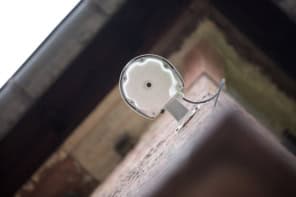![ESRF_booster-ring_003 [].jpg](https://physicsworld.com/wp-content/uploads/2009/04/ESRF_booster-ring_003205B5D.jpg)
Booster-ring
By James Dacey
Phew, they certainly don’t believe in wasting any time here at the European Synchrotron Radiation Facility (ESRF).
Day one of my synchrotron sojourn involved a medley of information from key staff, a whistle-stop tour of the 844m storage ring, an afternoon excursion to one of the most intense neutron sources on the planet…
… finished off by dinner with the ESRF scientists.
I think this sense of urgency must be fuelled by the annual turnover of over 6000 scientists who travel from across the 12 member countries (and beyond) to use the facility.
Many of these scientists are PhD students from wide-ranging disciplines, including biology, chemistry and the earth sciences, who come along with thier pre-prepped samples and probe them with this brilliant light source to hopefully reveal some interesting things.
Passing through the central coffee square, you certainly get the impression that this is a lively, creative environment for young researchers to come and share ideas with peers from across Europe.
In the morning I also managed to catch up with Harald Reichert, the new head of research at the ESRF, who compared the facility to a Swiss army knife. “We serve almost every branch of science, all you need is a good idea,” he told me.
After scurrying along the beamlines (I’ll be spending more time there today), I then spent the afternoon at the Institut Laue-Langevin (ILL), which neighbours the ESRF.
A neutron source, the ILL was founded over 40 years ago as the first large research collaboration between France and Germany after World War II, and in many ways it sees itself as the older, wiser brother of the ESRF.
And time on the neutron beam seems to be equally as precious as time with the ESRF X-rays; the head of science, Andrew Harrison, told of how he used to try and sleep amongst the machinery back in his student days.
I saw some pretty cool experiments including a group who were using the neutron beam to look at how different types of molecule react at a surface of water. “Across nature, surfaces are being created then destroyed again,” said the group leader.
To test a surface under stable conditions, they had created a water fountain whose flat surface was perfectly renewed every second – you really couldn’t tell anything was changing!



